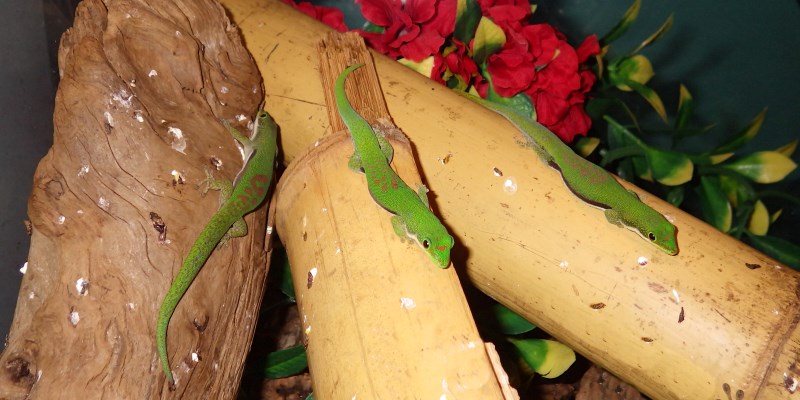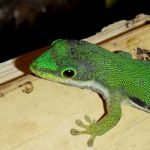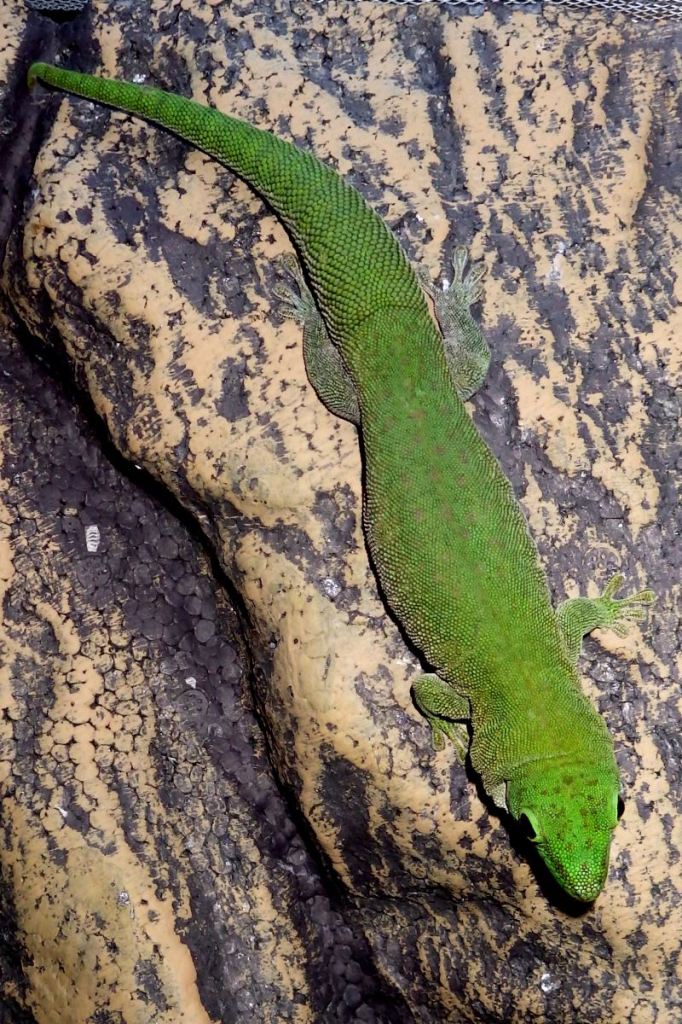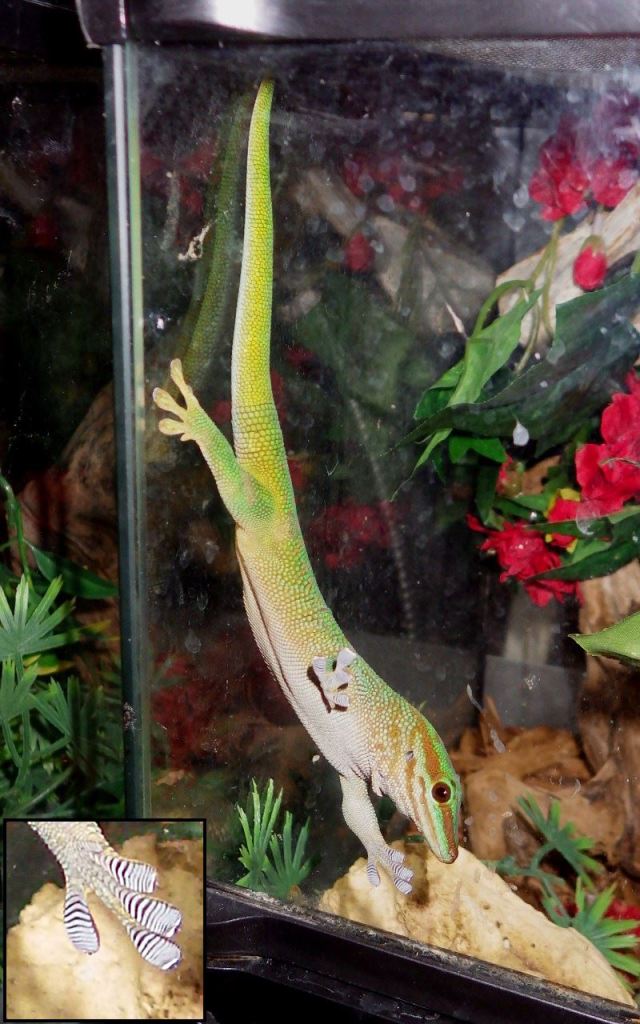Geckos in the genus Phelsuma, known as the day geckos are possibly the most beautiful lizards in the world.

Madagascar lined day geckos (Phelsuma lineata) being sold in a pet store.
Many people like to keep day geckos as pets because of their stunning bright coloration. In the wild day geckos live on various islands, most species commonly bread in captivity originate from Madagascar.
Day geckos, as their name suggests, are diurnal i.e. active in the day time. This makes it easier for people to show off their pet day geckos.
Day geckos eat both insects and fruits and should be fed both in captivity. Day geckos need a forest themed terrarium with vertical space as they like to climb up and down trees. Day geckos, like most diurnal reptiles, also need appropriate amount of UVB light for vitamin D production.
Day geckos are not particularly delicate and with proper care they tend to stay healthy in captivity and provide the humans who keep them with years of enjoyment, about a decade or in the case of some larges species even two.
Most day geckos will breed in captivity and if you are considering to get one as a pet you should look for a captive bread one which would probably be healthier than a wild caught animal. Some of the captive bread morphs of the giant day gecko are considered to be truly living jewels. Also by only purchasing captive bred specimens you are not harming the wild day gecko population who already have enough problems due to their shrinking habitat.
Geckos are fascinating creatures as they can climb up seemingly completely smooth walls or walk around on ceilings.
Geckos achieve this by using adhesion between various materials and the pads on their toes. Apparently the gecko’s toe pads do not adhere to Teflon too well and geckos have a hard time climbing up non-stick cookware.
Further Readings:
Care Sheet- Day Geckos.
Phelsuma Care Sheet.
Lined Day Gecko Care Sheet – Phelsuma lineata.
Koch’s giant day gecko on Wikipedia.
Gecko on Wikipedia.
Why do the feet of the Gecko Lizard not stick to Teflon surfaces? – Biology Stack Exchange.




